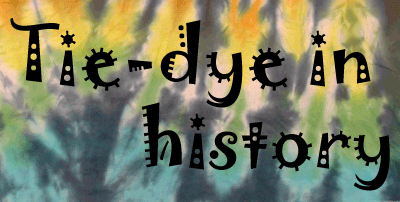hip·pie: a usually young person who rejects the mores of established society (as by dressing unconventionally or favoring communal living) and advocates a nonviolent ethic ; broadly : a long-haired unconventionally dressed young person
Origins
Although the hippie movement is most associated with the 1960s in the United States, its roots go as far back as the Ancient Greeks and Eastern Buddhist cultures. The philosophy behind hippie culture drew inspiration from the teachings of Jesus, Hillel the Elder, Buddha, St. Francis of Assisi, Henry David Thoreau, Ghandi and others. Hippie culture emphasized disassociation with mainstream institutions and favored alternative lifestyles. Hippies tended to be vegetarians and environmentalists. They also preached non-violence and became strongly associated with anti-Vietnam War protests.Key Events
The Electric Kool~Aid Acid Test is a book by Tom Wolfe, and was published in 1968. It details the trip of Ken Kesey and his followers, the Merry Pranksters, as they journeyed cross-country in a psychedelic-ly painted bus titled Further. The members of the Merry Pranksters frequently engaged in drug use, and Wolfe devoted much of his book to the Pranksters' individual experiences on the trip. Although it was published in the downward swing of the hippie movement, The Electric Kool~Aid Acid Test gives insight that few other literary works can provide. Since Wolfe rode along with the Merry Pranksters, he was able to use first-hand experience as well as bring his journalistic eye to occurrences that few others had profiled before him.The Summer of Love began in June of 1967 and was another event that brought hippie culture into the mainstream's focus. TIME magazine devoted their July 7, 1967, issue to hippie culture with a cover story titled "The Hippies: The Philosophy of a Subculture." It said, "If there were a hippie code, it would include these flexible guidelines: Do your own thing, wherever you have to do it and whenever you want. Drop out. Leave society as you have known it. Leave it utterly. Blow the mind of every straight person you can reach. Turn them on, if not to drugs, then to beauty, love, honesty, fun."
The Woodstock Music and Art Festival was an event that perhaps best displayed hippie culture. Woodstock first occurred in 1969 and allowed the so-called "Flower Children" of the day to gather and listen to artists such as Joan Baez, Janis Joplin, The Grateful Dead, Carlos Santana, Jimi Hendrix and many others that became heavily associated with counterculture. Over 500,000 people attended the first Woodstock and the sentiments in that festival are echoed in many other events such as Bonnaroo Music and Arts Festival and Langerado, which occur every year.
Importance of Music
Music was one of the main ways hippies expressed themselves. They not only used songs and chants in anti-Vietnam War protests, but many artists during the 1960s became part of the hippie revolution. Two iconic hippie bands are Phish and The Grateful Dead. These two bands quickly epitomized hippie culture with their appearence and pioneered the formation of "jam bands," which are characterized by long, spur-of-the-moment instrumental jam sessions, usually mid-concert. Both of these bands remained popular long after the hippie culture was pushed to the back burner of American society, and though they stopped touring for a few years in the 1990s, they have both recently reunited and started touring once again.If one song were to characterize the hippie movement, it ironically would not be by Phish or The Grateful Dead. Scott McKenzie did a rendition of "San Francisco (Be Sure to Wear Flowers in Your Hair)" in 1967 that was adopted as the "theme song" of hippie culture.
What does it all mean?
